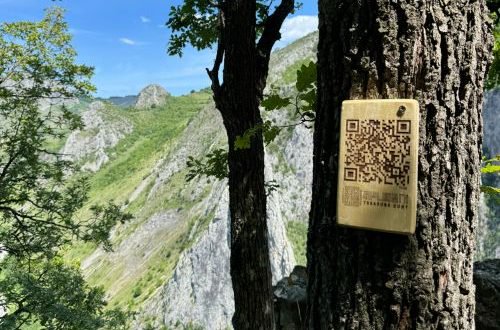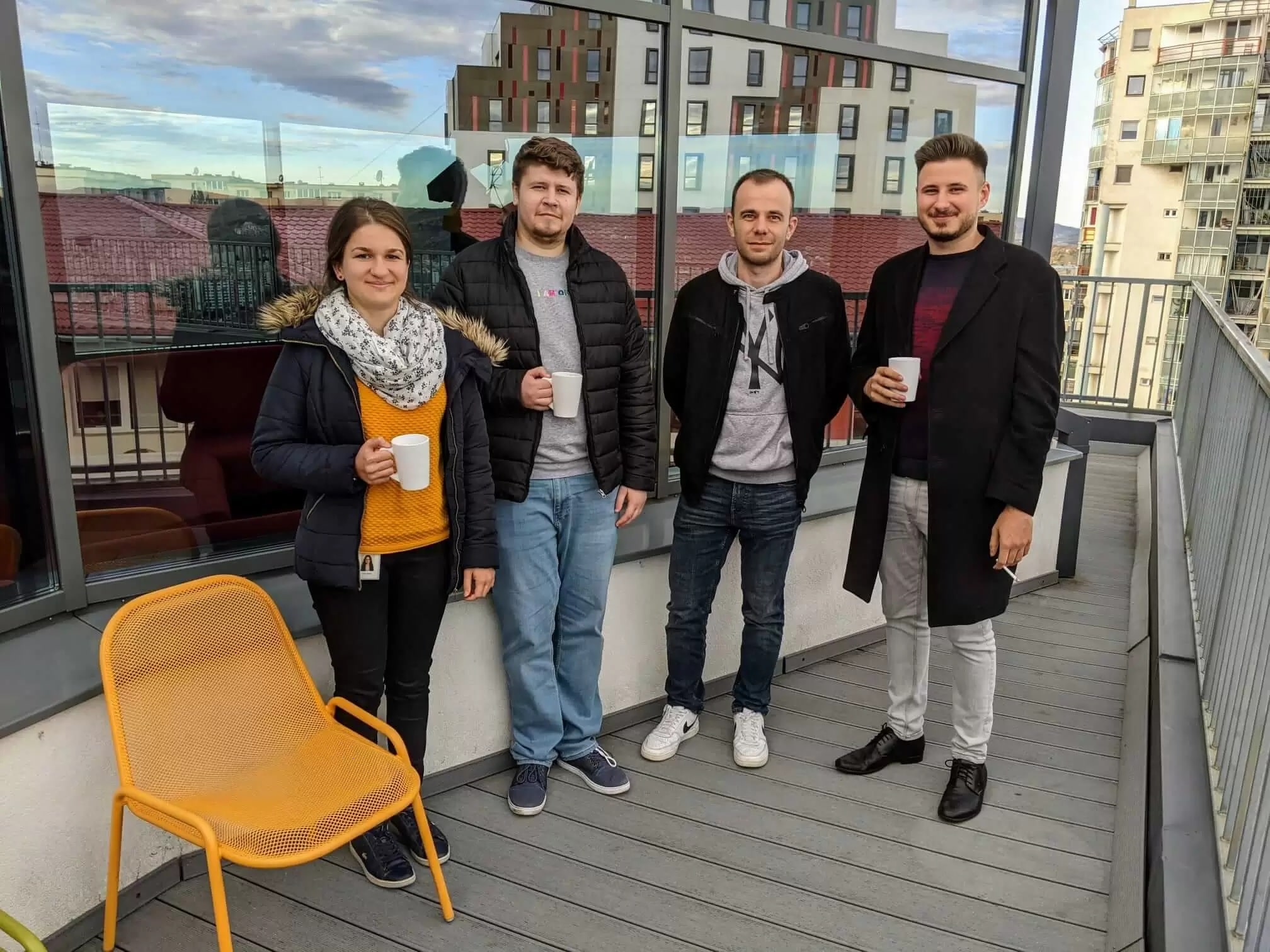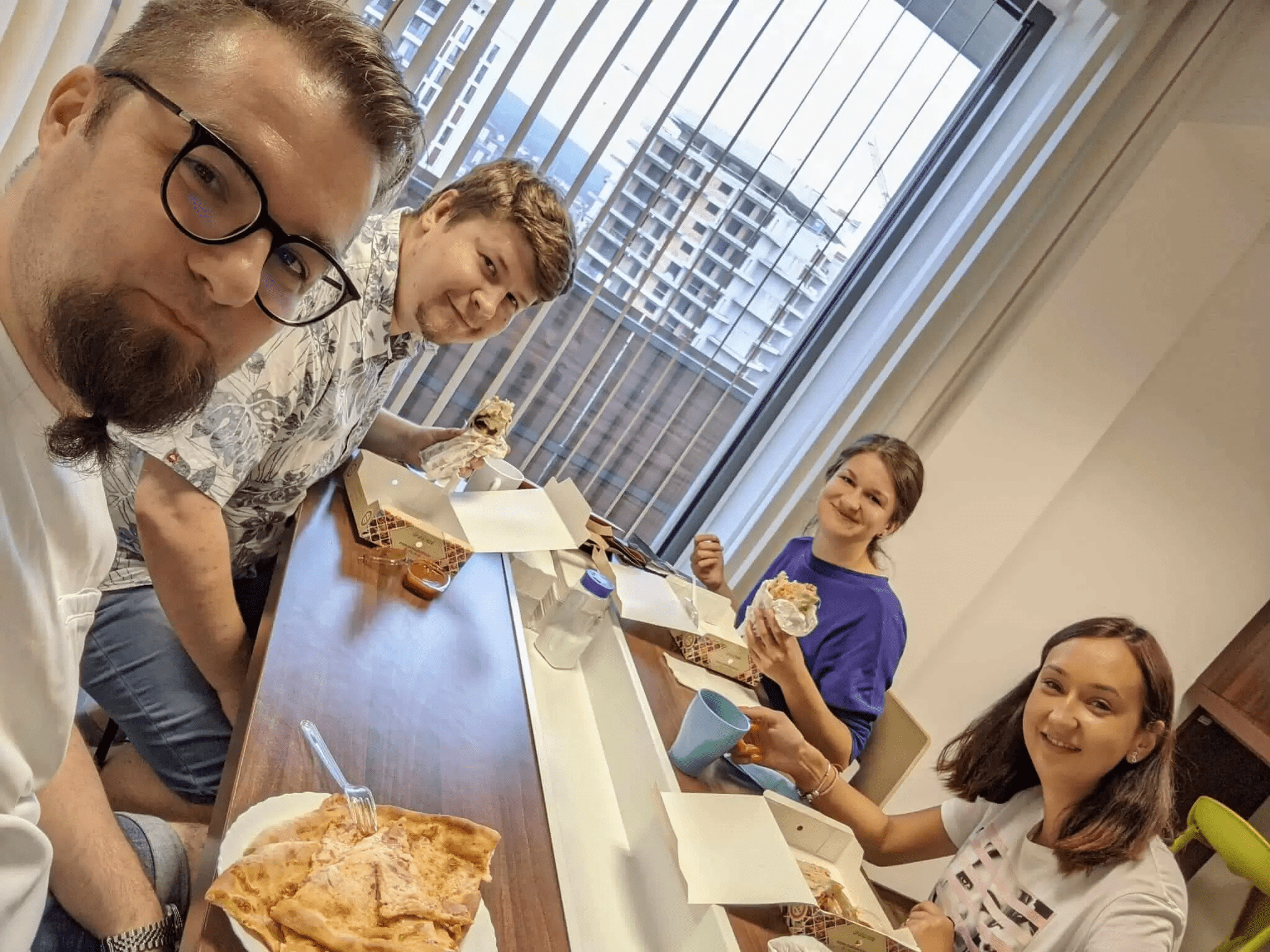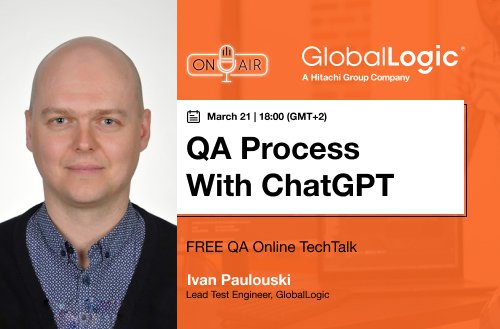- Services
Technology Capabilities
Technology Capabilities- Product Strategy & Experience DesignDefine software-driven value chains, create purposeful interactions, and develop new segments and offerings
- Digital Business TransformationAdvance your digital transformation journey.
- Intelligence EngineeringCreate high-value products faster with AI-powered and human-driven
- Software Product EngineeringCreate high-value products faster with AI-powered and human-driven engineering.
- Technology ModernizationTackle technology modernization with approaches that reduce risk and maximize impact.
- Embedded Engineering & IT/OT TransformationDevelop embedded software and hardware. Build IoT and IT/OT solutions.
- Industries
- GlobalLogic VelocityAI
- Insights
White PapersSeptember 17, 2024Diana SocaciuElevating Romanian Tourism with GlobalLogic: Apuseni App
The innovative banking apps, such as the one we'll explore in this case study, succeed ...
 Case StudiesGlobalLogic
Case StudiesGlobalLogicFrom Legacy to Leading-edge: A Global Software Leader’s ...
Discover how GlobalLogic’s AI-powered solutions helped a global software leader migrate...

- About
Programming Renewable Energy Monitoring Systems with Edina, .NET Software Developer
Edina Balog joined us in 2018. Since then, she has had the opportunity to explore different career growth perspectives by working with various technologies and gaining experience in mobile, desktop, and web development. The main projects that Edina has worked on were a complex Renewable Energy Monitoring System and a complex program for calibrating pyrometers and generating certificates for a client in the photovoltaics industry; she’s also focusing on improving her technical and mentoring skills.
Get a glimpse #BehindTheCode, meet Edina, .NET Software Developer.
Tell us a bit about yourself – your background, interests, and hobbies.
I was always passionate about technology. As a child, I was the go-to person in my family to fix TVs or computers – this also meant sometimes breaking them first, then finding the solution. 🙂
In high school, I studied Mathematics and Computer Science in Oradea. My hometown was a couple of kilometers away, so every week on Friday, I traveled home with a friend who was working as a Software Developer in Oradea. We had endless discussions about programming. It was in fact those talks that convinced me to start my journey in tech and dream of becoming a Software Developer.
In 2016, I got my bachelor’s degree in computer science from the Babes-Bolyai University of Cluj-Napoca. I’ve been working in the tech industry for the past seven years and, despite the difficulties I faced, I could not be happier with my career choice.
I enjoy playing strategic board games with my friends and traveling abroad or within Romania in my free time. There are so many great places to explore.
The past year was challenging due to the pandemic, but it didn’t stop me from visiting new places and gathering new experiences. One of my favorite countries to see is Italy. I love the food, the language, and the vibe, so I want to go to Italy whenever possible.
I joined the company in 2018 as a Junior Software Developer in the .NET field. I consider myself very lucky, as I had the opportunity to explore different perspectives by working with various technologies and gaining experience in mobile, desktop, and web development in the past few years.
Tell us a bit about your software development career. How did it start and evolve?
My first project was a mobile application where we used Xamarin.Forms, an open-source cross-platform framework from Microsoft for building iOS, Android, and Windows apps with .NET, from a single shared codebase.
For a few months, I also worked on two different, already ongoing desktop projects, where my responsibility was to add some new features. That’s how I got familiarized with WPF and with desktop development.
I then worked on a web application, and I was promoted to Senior Software Developer. My day-to-day responsibilities included:
- Contributing to project development.
- Managing production releases.
- Offering technical support and mentoring my junior/mid developer colleagues.
Describe one of the most interesting projects you worked on.
My team and I worked on a web application allowing users to monitor solar plants. The most valuable features of the application were live charts, periodical reports, and error notifications. The project could receive an excessive number of packets from the connected inverters and other devices. Relying on that, the most innovative part of the software was telling apart false alarms and real maintenance problems. The algorithm that sees the performance drop off a device also considered the performance of other close-by devices. If the performance of those devices has fallen too, then the cause is harsh weather, not technical difficulties.
The application had an ever-expanding admin interface that allowed an overview for the client and the possibility to execute administrative tasks from the user interface (as opposed to working with database scripts).
What was the project’s tech stack like?
The project was a long-running one, 15+ years, so it is in the team’s best interest to have the most robust architecture possible. Although the application used an older base technology (Asp.Net WebForms), all other tools were kept modern (SASS, Gulp, Twitter Bootstrap). The product had multiple components: load-balanced services that collected the data; local services that maintained the database, sent emails, and generally operated on data (for different services, we used ASP.NET Web Services, Windows Services); the web application allowed users to visualize the data of their devices; an API allowed users to download the data of their devices and APIs serving other pieces of the solution, like the Android and iOS apps. A big amount of data is stored in a database in an MS SQL Server. The application communicated with it using LINQ to SQL. We also used DevExpress, HighCharts, GoogleChrome Puppeteer, Quartz.NET, and many other frameworks and libraries. We worked with an Agile process model, which meant that after a two-week sprint, we deployed the latest version of the application to the development platform. We started by planning the sprint content based on the client’s requirements, prioritizing the tasks and bugs as requested, and focusing on product development. We tested the changes, and then the latest iteration of the project was delivered to the development platform. Then, we repeated the entire process while we made sure to incorporate feedback from the clients.
 Coffee break and brainstorming
Coffee break and brainstormingWhat was your favorite thing about this project?
I liked that as a team, we only accepted high-quality code. We modernized different aspects of the project in the past years, and I was fortunate to experience the whole process. It was a perfect training project for me due to its robust architecture and the experienced team I got to work with. I worked on the new and more complex requirements and features. The fascinating thing about that project was that we were constantly implementing new functionalities, expanding, and updating the system, even if it was a long-running one.
What was the most challenging thing about this project?
The implementation’s most significant challenge lies in the application’s ability to receive the data and show it to users. This challenge came from the large number of connected devices.
Also, the same product was used for multiple clients. The key idea was that every requirement, every milestone, every feature was part of the complete system at the highest level. The existing systems deployed at various customers are essentially a collection of features. Each feature was defined as depending on or enabled by other features. Therefore, when we develop a new feature, we must be very careful, as maybe it is requested only by one of our clients. When the feature is turned off, no sign of it can be visible.
How about the team? How was the vibe?
Our team had eight members: six developers, one project manager, and a QA responsible. As a team, we always tried to help each other in every situation. So, I think that since we started working from home, the team has become stronger. We became more supportive because we dedicated more time to hearing each other out. We also met for coffee, a homemade cake, and some fun time in one of my colleague’s garden in Salicea.
 Edina and her team at lunch
Edina and her team at lunchWhat advice would you give to someone interested in joining GlobalLogic?
There are so many opportunities and perspectives to explore different projects and technologies that I am sure you will find one that fits you.
GlobalLogic provides many activities to enjoy. For example, I joined our internal sports competition called Moving Challenge. It’s a 6-month program that encourages us to go outside and practice biking, running, and walking. All this in a gamified context – with points to collect, levels to achieve (with team and individual targets), and prizes to win. So, if you are a sports enthusiast, you should work with us! 🙂
What’s next in your career journey?
In addition to coaching and mentoring skills, I am focusing on improving my technical skills. I am eager to learn new technologies in the field and to become better and better in my domain.


